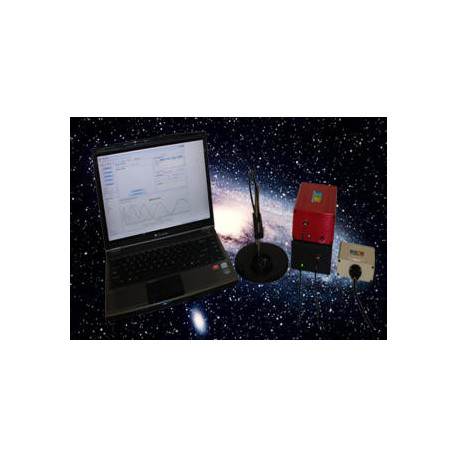ThinFilm measurement system

Reference number: STE-ThinFilm
The analysis and measurement of thin layers with the help of a spectrometer.




Reference number: STE-ThinFilm
The analysis and measurement of thin layers with the help of a spectrometer.

Need more info?
Contact our expert.
Optical Test & Measurement Team
Phone: +49 8153 405-11
Description
ThinFilmCompanion Software Measures Multilayer Film Structures
ThinFilmCompanion Features:
The Thickness and optical constants (n and k) can be measured quickly and easily using reflectance and/or transmittance spectroscopy. The measurement and analysis of the data provides results in seconds. USB connectivity and powerful user-friendly software make daily complex measurements quick and simple.
TFC software includes large library of materials data that enables measurement of the wide range of layer structures: multilayer, freestanding, rough, thick and thin layer structures are supported. New materials can be added easily by measuring corresponding sample or importing data from the text file.
The measurement process consists of two steps: data acquisition and data analysis. TFCompanion defines all the process in a measurement recipe and makes it transparent to the user. At the same time the user has the ability to store measured data and analyze it later.
TFCompanion supports Parameterized materials e.g. Cauchy, Sellmeir, EMA (effective-medium approximation), Harmonic oscillator, Tauc-Lorentz oscillator, Drude-Lorentz and many more approximations. These approximations represent optical dispersion of materials in desired spectral range using few coefficients that can be adjusted. For example, oxides are frequently represented using Cauchy and glasses using Sellmeir approximation, amorphous materials (e.g. SiNx, aSi) can be represented using Tauc-Lorentz and phasemixed materials (e.g. poly-Si) using EMA approximation.
Measurements are made using: reflectance/transmittance spectroscopy which measures the optical response of the layer structure. The user creates an optical model of the layer structure and uses data analysis to determine physical properties: the results are inferred from the best fit of measured and modeled data. TFCompanion provides many options to easily analyze simple and most complex filmstacks: graded layers, periodic structures, very thick films, films on thin substrates, multi-sample measurements, etc. Simulation and error-estimator tools allow user better understand data and the expected precision.
During in-situ, in-line or other long running measurements conditions like surface roughness, ambient light, etc. maybe changing. TFCompanion supports roughness and scaling correction that allows factoring in these effects.
Downloads